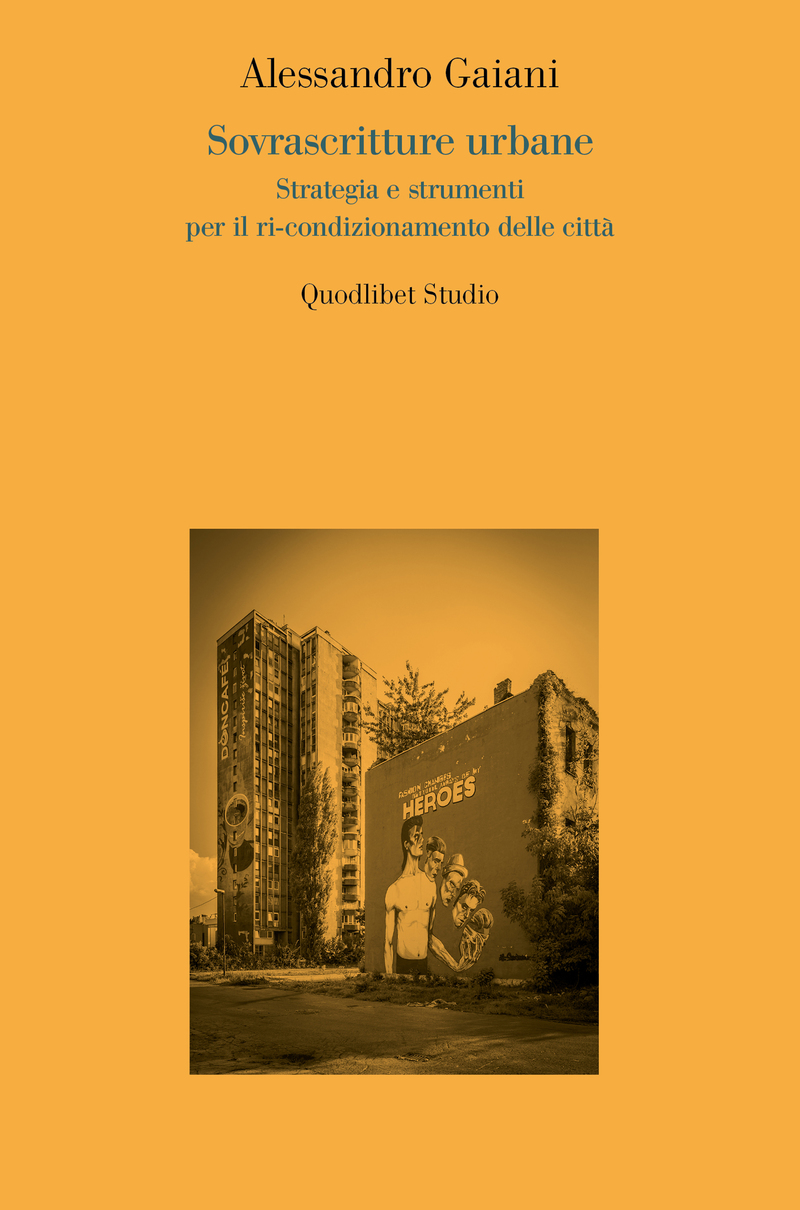
The grammar of urban over-writing
The precondition is the awareness of the historical change we are going through, with the implosion of most of the social, financial and technological systems that ruled the 20th Century. The need of a redefinition of the role of design is described as urgent, but not to be based only on new tools and technologies – like digital above all. It should be defined instead according with the local heritage, as material and cultural legacy given by the context.On this mean the author offers a solid argumentation with his perspective on the evolution of the design from modern to now, going through the main publications and exhibitions of the last century. That paints the realistic framework where to operate for a contemporary design.
As the starting point is identified in the failure of a linear model tending to an infinite growth, the next step figures a circular system where the resources are balaced between natural and anthropic demand, against a blind consumerism, but yet open to provide a sustainable development of society. This approach reminds the theories that William McDonough express in From Cradle to Cradle, even in that diagram where the symbol of ”plus infinite” re-shapes in a double closed circular system.
The design can operate in many ways for this purpose: first of all by being a transparent process, open to multiple issues, instead of a protocol for authorised personnel only, following a bottom-up principle to legitimate urban transformations. Then is unevitable to operate on the existing fabric, starting from the urban brownfields, in order to preserve the amount of permeable soil of the planet. Over-writing on the existing heritage with new architectures will create an original palimpsest, where to have a diachronic reading of the evolution of the city. From this point of view, Italy would represent a perfect training field for experimentation due to its history and complexity. The metodology on the micro-scale is based on continuous hybridations, which define mutations both in funtional and – consequently – formal meanings of the places.
The greater value recognized to the process with which a place is conceived, considering the shape as the result instead of the generator, challenges the designers to research new poetics, in order to avoid that “new realism will be translated in new functionalism”, as Franco Purini states in the foreword of the book. The constant reference to the discipline of language works again in understanding the way shown by Alessandro Gaiani, which has groundworks in the education of the designers in reading the context, so to write - or better over-write - their own text with an innovative, but yet not arbitrary grammar.
Francesco Pasquale
Title: Sovrascritture urbane. Strategia e strumenti per il ri-condizionamento delle città
Language: italian
Publisher: Quodlibet studio, Macerata
Series: Città e paesaggio. Saggi curata da Manuel Orazi
Characteristic: formato 14x21,5 cm, 136 pagine, brossura, bianco e nero
ISBN 9788822901552
Year: 2018